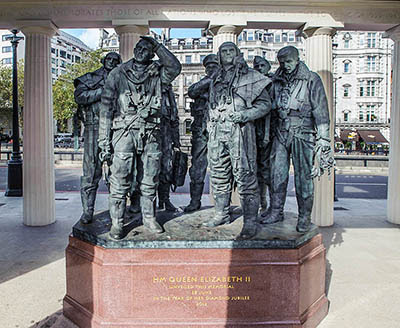The British Commonwealth Air Training Plan
 |
| A Fairchild Cornell flying over Elementary Flying Training School No 19 in Virden, Manitoba 1944. Photo by Nicholas Morant, Department of National Defence |
The program, established December 1939, involved the establishment of 90 schools, the aim to train 50,000 men for the air force, including 20,000 pilots. A training plan was established similar to that of the RAF: 3 initial training schools, 13 elementary flying training schools, 16 service flying training schools, 10 air observer schools, 10 bombing and gunnery schools, 2 air navigation schools and 4 wireless schools.
 |
| A Link Trainer flight simulator used at No 19 Elementary Flying School. Photo by Nicholas Morant, Department of National Defence. |
The BCATP ended on March 31, 1945 after graduating over 130,000 pilots, navigators, bombers, wireless operators, gunners and flight engineers belonging to the Royal Air Force (included Poles, Norwegians, Belgian, Dutch, Czechs and French), the Royal Canadian Air Force, the Royal Australian Air Force and the Royal New Zealand Air Force.
For the Harris Crew, training would have started out at one of the five Manning Depots, located in Toronto, Brandon, Edmonton, Quebec City and Lachine.
The Manning Depots would familiarize the recruits with military discipline and basics of aviation, in addition to drills and exercises. After completing their initial training, the recruits were channeled to a BCATP training school for airmen or to a training camp for ground personnel.
 |
| "I'll be with you boys" poster for the RCAF by Joseph Sydney Hallam. Source: Dept. of Rare Books and Special Collections, McGill University Libraries |
Bomber Pilots were sent to western flying schools. On average, it would take between 18 months and two years to qualify as a pilot.
Navigators and Bomb Aimers
Navigators and bomb aimers would attend approximately 30 weeks of training, beginning at an elementary training school, followed by weeks of bombing and gunnery school and finishing with air navigation school.
Wireless Operators and Gun Aimers
Wireless operators and air gunners completed a 28-week wireless training programme followed by 6-weeks of bombing and gunnery school.
Flight Engineer
The flight engineer position was created in 1940 to serve on the heavy bomber planes, as a replacement for second pilots. Most engineers trained in the UK, though about 1,900 engineers did graduate from BCATP’s one school for flight engineers, in Aylmer, Ontario, after it opened in July 1944. Due to the late-war opening of the Aylmer school, Harris crew Flight Engineer Kenneth Smith completed all of his training in the UK.
Once the airmen were certified, they would be sent to an RAF air base in Great Britain to continue their training.

Comments
Post a Comment